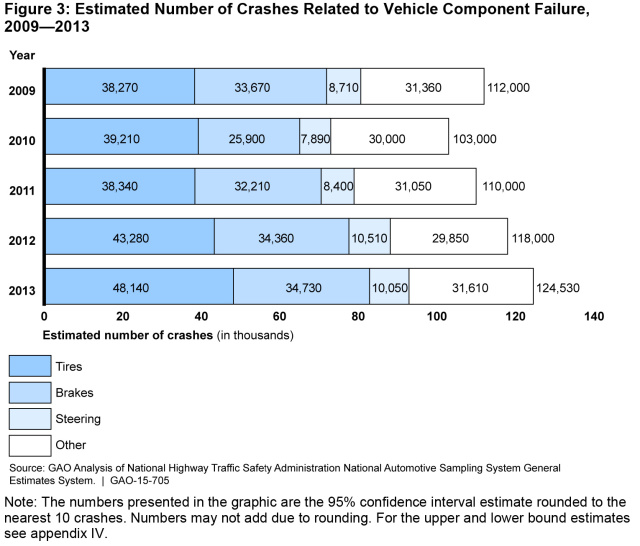Driving is one of the riskiest things most Americans do. There were more than 5.5 million vehicle crashes in the U.S. in 2013—killing more than 32,000 people and injuring another 2.3 million.
You may remember getting your car inspected for safety, but car condition is a factor in only 2-7% of U.S. crashes according to the Department of Transportation.
In fact, drunk driving, speeding, weather, distracted driving, road conditions, and many other factors contribute to road safety. So, what does this mean for vehicle inspection programs? For Sunday’s World Day of Remembrance for Road Traffic Victims, we’re sharing some of what we found from our
2015 review.
A history of safety inspections
Vehicle safety inspections used to be fairly common across the country. In 1975, more than 30 states and the District of Columbia required drivers to periodically have their cars inspected. Back then, states without inspection programs risked having some highway funds withheld by the Department of Transportation. But in 1976 the laws about withholding funding changed, and as of 2015 only 16 states continued to have vehicle safety inspection programs.
 (Excerpted from GAO-15-705)
(Excerpted from GAO-15-705)
Yet some states that had safety inspection programs later eliminated them because they couldn’t show that they were working. For example, before the District of Columbia eliminated its program, it analyzed crash data and found that most accidents resulted from driver behavior—not vehicle mechanical failure. And a New Jersey official told us the state couldn’t justify the $17 million annual costs of its inspection program since there was no conclusive data on its effectiveness.
For states with vehicle inspection programs, the National Highway Safety Transportation Administration sets mandatory minimum inspection criteria for vehicle brakes, steering, suspension, tires, and wheel assemblies. However, NHSTA officials told us they take a hands-off approach to state vehicle inspection programs, instead focusing on areas that contribute more heavily to crashes, such as driver behavior.
Do safer vehicles=safer roads?
Transportation officials in 15 of the 16 states with vehicle safety inspection programs said it was difficult to parse out the exact costs and effects of their programs. For example, safety inspection costs may be combined with costs from other inspection programs, such as emissions. And inspections aren’t states’ only safety measures—enforcing state traffic safety laws could also influence crash rates.
However, officials from all 15 states told us that safety inspections can
- identify vehicles with safety problems, and
- result in repairs or removals of unsafe vehicles from the roads.
For example, in Pennsylvania, nearly 530,000 cars, motorcycles, and other vehicles—about 20% of all the vehicles in the state—failed inspection in 2014 and then underwent repairs. Virginia officials felt their roadways were safer because their program identified safety problems in 19% of the state’s 7.5 million vehicles in 2014.
 (Excerpted from GAO-15-705)
(Excerpted from GAO-15-705)
New technologies, new criteria, new challenges
According to a majority of officials we spoke with, one state inspection challenge is how to inspect new technologies. For example, LED brake lights have multiple light-emitting diodes, but states lack guidance on the number of broken diodes it takes to render a brake light unsafe. State officials told us they would like NHTSA to weigh in so they can set appropriate pass/fail standards for LED brake lights.
 (Excerpted from GAO-15-705)
(Excerpted from GAO-15-705)
In 2015 we
recommended that DOT better communicate with state safety inspection officials and respond to their questions. DOT agreed and has already taken action to do so.
 (Excerpted from GAO-15-705)
(Excerpted from GAO-15-705) (Excerpted from GAO-15-705)
(Excerpted from GAO-15-705) (Excerpted from GAO-15-705)
(Excerpted from GAO-15-705)
